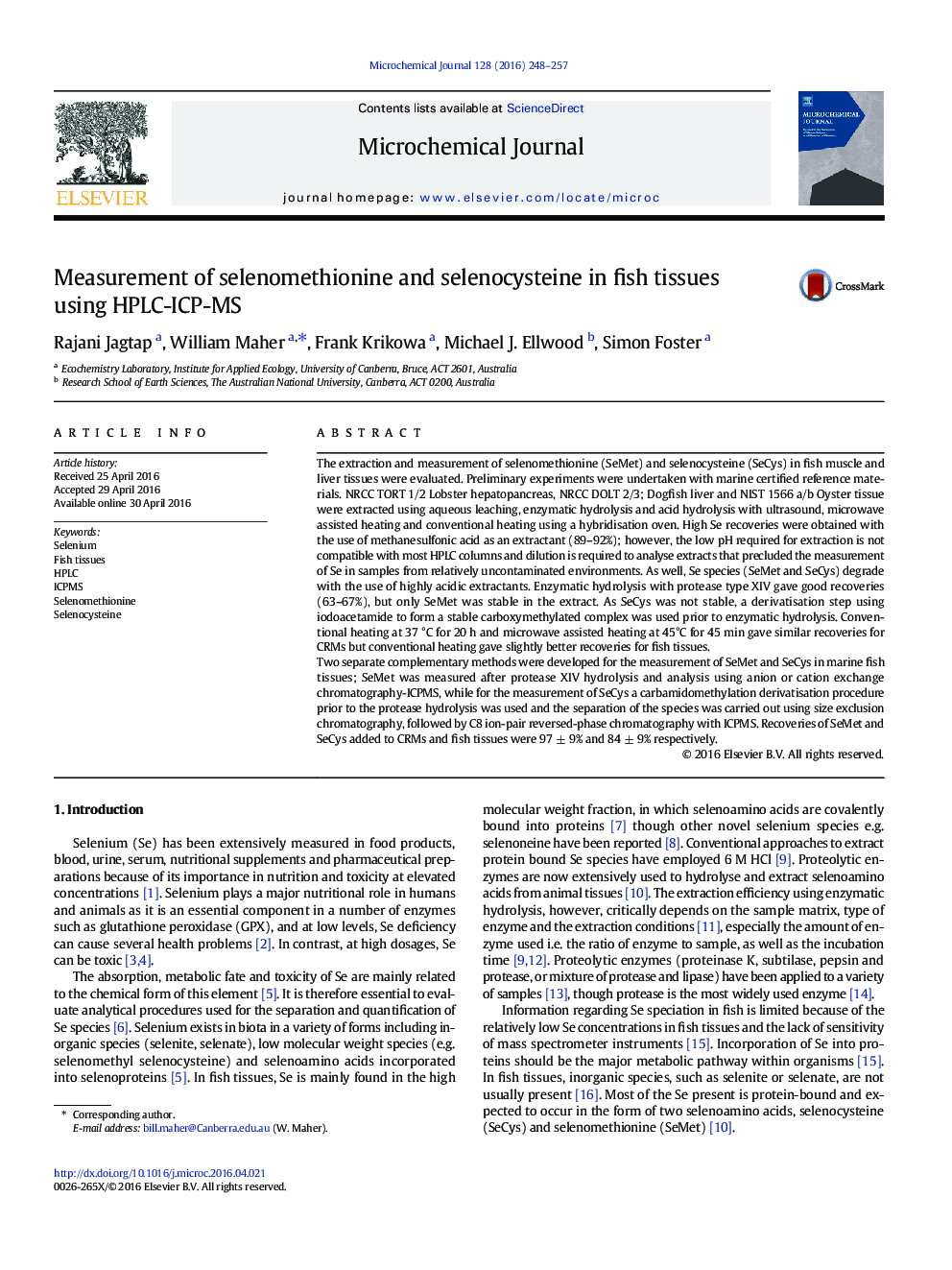| Article ID | Journal | Published Year | Pages | File Type |
|---|---|---|---|---|
| 1227564 | Microchemical Journal | 2016 | 10 Pages |
•Speciation analysis of selenocysteine and selenomethionine in fish tissues•Species extracted by enzymatic hydrolysis•Measurement of selenomethionine directly by HPLC-ICPMS•Measurement of selenocysteine after carbamidomethylation by HPLC-ICPMS
The extraction and measurement of selenomethionine (SeMet) and selenocysteine (SeCys) in fish muscle and liver tissues were evaluated. Preliminary experiments were undertaken with marine certified reference materials. NRCC TORT 1/2 Lobster hepatopancreas, NRCC DOLT 2/3; Dogfish liver and NIST 1566 a/b Oyster tissue were extracted using aqueous leaching, enzymatic hydrolysis and acid hydrolysis with ultrasound, microwave assisted heating and conventional heating using a hybridisation oven. High Se recoveries were obtained with the use of methanesulfonic acid as an extractant (89–92%); however, the low pH required for extraction is not compatible with most HPLC columns and dilution is required to analyse extracts that precluded the measurement of Se in samples from relatively uncontaminated environments. As well, Se species (SeMet and SeCys) degrade with the use of highly acidic extractants. Enzymatic hydrolysis with protease type XIV gave good recoveries (63–67%), but only SeMet was stable in the extract. As SeCys was not stable, a derivatisation step using iodoacetamide to form a stable carboxymethylated complex was used prior to enzymatic hydrolysis. Conventional heating at 37 °C for 20 h and microwave assisted heating at 45°C for 45 min gave similar recoveries for CRMs but conventional heating gave slightly better recoveries for fish tissues.Two separate complementary methods were developed for the measurement of SeMet and SeCys in marine fish tissues; SeMet was measured after protease XIV hydrolysis and analysis using anion or cation exchange chromatography-ICPMS, while for the measurement of SeCys a carbamidomethylation derivatisation procedure prior to the protease hydrolysis was used and the separation of the species was carried out using size exclusion chromatography, followed by C8 ion-pair reversed-phase chromatography with ICPMS. Recoveries of SeMet and SeCys added to CRMs and fish tissues were 97 ± 9% and 84 ± 9% respectively.
